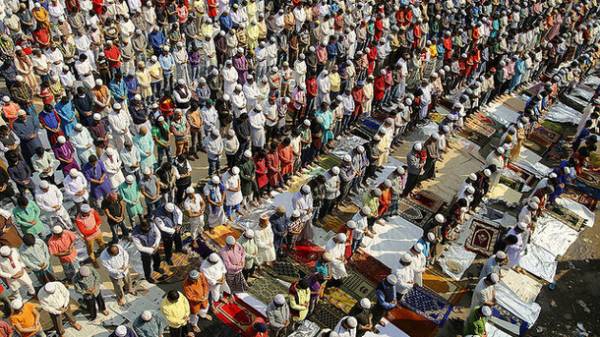
1 September 2017 Muslims will celebrate one of the main Islamic holidays of Eid al-Adha (Arabic name – Eid al-Adha) or the feast of sacrifice, marking the end of Hajj – the pilgrimage to Mecca.
Every year the Eid al Adha is celebrated on the seventieth day after the holiday of Eid al-Fitr, that is, on the tenth day of the Islamic month of Dhul-Hijjah. Thus in 2017 the holiday falls on September 1.
The feast of sacrifice dates back to the history of the trials of prophet Ibrahim sacrifice in honor of Allah. As described in the Qur’an, Ibrahim was Jabail, angel, and conveyed from Allah the command to sacrifice his son (the first word of Allah). Being devout, Ibrahim obeyed the command of the Almighty and began to prepare to sacrifice his son Ismail. Ismail learned of his fate, did not resist because he was obedient to the father, and God. But at the last moment, when the sacrificial dagger have already been entered, Allah has made it so that my son Ibrahim was stabbed. Subsequently, instead, the slaughter was sent a sheep. Abraham was blessed because of his faith passed the test.
- Before the prayer is not recommended
To celebrate the day of sacrifice, even if it does not occur in Mecca, start early in the morning. At first light Muslims go to the mosque for the morning prayer, but first you must make ghusl, put on new and tidy clothes, to anoint themselves with perfume. Before the prayer is not recommended.
- Don’t have to put things dark colors
In the festival, Muslims make ablution and dress up in festive clothes, it is especially important that the outfits were in bright colors. So no need to wear dark clothes.
Upon completion of the morning Salat (prayer) believers back home, and then, at will, gather in groups on the street or in yards, where they sing in unison praises to God (Takbir). They then go to the mosque or in the designated area, where Mullah or Imam-Khatib preaches.
- Sacrificial lamb can’t eat the next day
This Muslim holiday is considered a mandatory sacrifice to Allah, a lamb, a cow or a camel up to the age of years, without external defects and has no offspring. The sacrifice is divided into three parts: the first owner of the house reserves to itself, the second victim, the community, and the third is given to poor people on the street. If, after the feasting part of the sacrificial animal was not eaten, then the next day to use it for food impossible. The animal skins are given to the temple.
Recall that in Muslim countries, Eid al-Adha is a festive day, and in some countries, Eid al-Adha is celebrated for three days.







